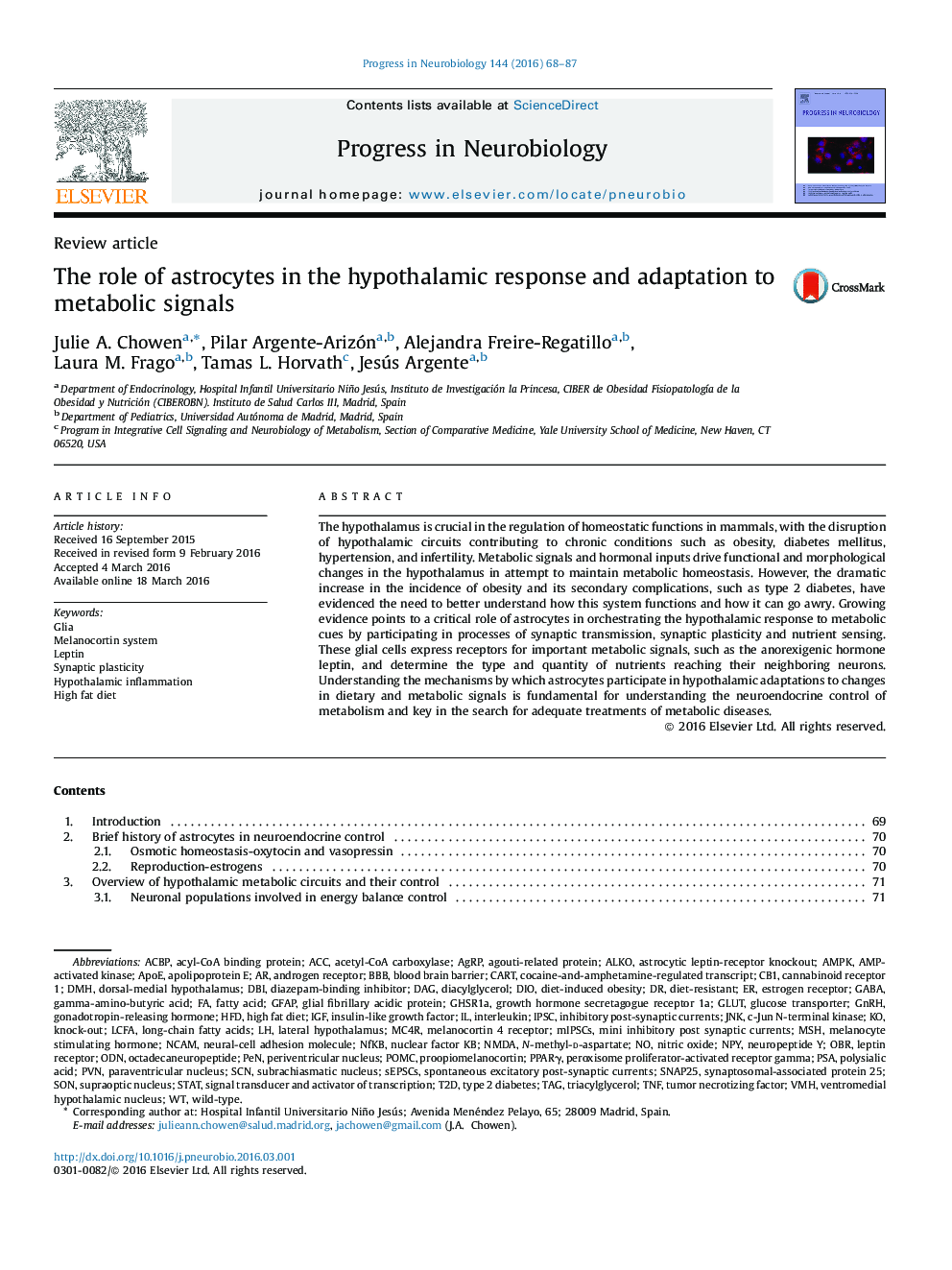| Article ID | Journal | Published Year | Pages | File Type |
|---|---|---|---|---|
| 4353211 | Progress in Neurobiology | 2016 | 20 Pages |
•Hypothalamic astrocytes mediate metabolic effects on the melanocortin circuit.•High fat diets and obesity modulate astrocyte morphology and function.•Leptin targets hypothalamic astrocytes.•Astrocytes participate in glucose and fatty acid sensing to modulate systemic metabolism.
The hypothalamus is crucial in the regulation of homeostatic functions in mammals, with the disruption of hypothalamic circuits contributing to chronic conditions such as obesity, diabetes mellitus, hypertension, and infertility. Metabolic signals and hormonal inputs drive functional and morphological changes in the hypothalamus in attempt to maintain metabolic homeostasis. However, the dramatic increase in the incidence of obesity and its secondary complications, such as type 2 diabetes, have evidenced the need to better understand how this system functions and how it can go awry. Growing evidence points to a critical role of astrocytes in orchestrating the hypothalamic response to metabolic cues by participating in processes of synaptic transmission, synaptic plasticity and nutrient sensing. These glial cells express receptors for important metabolic signals, such as the anorexigenic hormone leptin, and determine the type and quantity of nutrients reaching their neighboring neurons. Understanding the mechanisms by which astrocytes participate in hypothalamic adaptations to changes in dietary and metabolic signals is fundamental for understanding the neuroendocrine control of metabolism and key in the search for adequate treatments of metabolic diseases.
Graphical abstractFigure optionsDownload full-size imageDownload high-quality image (220 K)Download as PowerPoint slide
